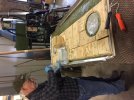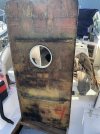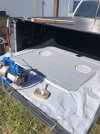Hi all,
I have a 96 Grady white adventure and the cover over the gas tank is spongy, not sure how to proceed in fixing it, I do not like stepping on it and try to avoid it making the boat seem a lot smaller, so it needs to be fixed without breaking the bank. Anyone have their cover fixed and how did you do it? I love the boat other than that but not sure how to proceed having it fixed. (Supports under the cover or having it) reglassed,) Thanks in advance for suggestions.
I have a 96 Grady white adventure and the cover over the gas tank is spongy, not sure how to proceed in fixing it, I do not like stepping on it and try to avoid it making the boat seem a lot smaller, so it needs to be fixed without breaking the bank. Anyone have their cover fixed and how did you do it? I love the boat other than that but not sure how to proceed having it fixed. (Supports under the cover or having it) reglassed,) Thanks in advance for suggestions.






